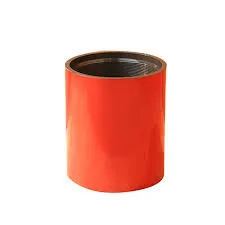- Afrikaans
- Albanian
- Amharic
- Arabic
- Armenian
- Azerbaijani
- Basque
- Belarusian
- Bengali
- Bosnian
- Bulgarian
- Catalan
- Cebuano
- Corsican
- Croatian
- Czech
- Danish
- Dutch
- English
- Esperanto
- Estonian
- Finnish
- French
- Frisian
- Galician
- Georgian
- German
- Greek
- Gujarati
- Haitian Creole
- hausa
- hawaiian
- Hebrew
- Hindi
- Miao
- Hungarian
- Icelandic
- igbo
- Indonesian
- irish
- Italian
- Japanese
- Javanese
- Kannada
- kazakh
- Khmer
- Rwandese
- Korean
- Kurdish
- Kyrgyz
- Lao
- Latin
- Latvian
- Lithuanian
- Luxembourgish
- Macedonian
- Malgashi
- Malay
- Malayalam
- Maltese
- Maori
- Marathi
- Mongolian
- Myanmar
- Nepali
- Norwegian
- Norwegian
- Occitan
- Pashto
- Persian
- Polish
- Portuguese
- Punjabi
- Romanian
- Russian
- Samoan
- Scottish Gaelic
- Serbian
- Sesotho
- Shona
- Sindhi
- Sinhala
- Slovak
- Slovenian
- Somali
- Spanish
- Sundanese
- Swahili
- Swedish
- Tagalog
- Tajik
- Tamil
- Tatar
- Telugu
- Thai
- Turkish
- Turkmen
- Ukrainian
- Urdu
- Uighur
- Uzbek
- Vietnamese
- Welsh
- Bantu
- Yiddish
- Yoruba
- Zulu
Understanding Female Threaded Couplings and Their Applications in Various Industries
Understanding Female Threaded Couplings An Essential Component in Mechanical Engineering
Female threaded couplings are vital components in mechanical and plumbing systems, designed to connect two male threaded components securely. Their applications extend across various industries, including automotive, aerospace, construction, and manufacturing. This article offers a comprehensive overview of female threaded couplings, exploring their design, applications, advantages, and manufacturing processes.
Design and Features
A female threaded coupling is a cylindrical component featuring internal threads designed to accommodate a compatible male threaded part. The dimensions and thread profile of the coupling must match those of the male part to ensure a tight seal and prevent leaks or disconnections. Typically crafted from materials such as brass, stainless steel, or plastic, the choice of material depends on the application's demands, including resistance to corrosion, temperature fluctuations, and pressure conditions.
The most common thread types used in these couplings include NPT (National Pipe Thread), BSP (British Standard Pipe), and metric threads. Each type has specific standards governing its dimensions and tolerances, ensuring compatibility between different components. Proper alignment and torque during installation are crucial for achieving an optimal connection, as these factors influence the coupling's performance.
Applications
Female threaded couplings are extensively used in various applications. In plumbing, they are essential for connecting pipes carrying water, gas, or other fluids, ensuring a leak-proof seal. In hydraulic systems, these couplings play a critical role in connecting hoses and fittings, which must withstand high pressures and dynamic forces.
In the automotive industry, female threaded couplings are employed in engines and transmission systems, allowing for the secure connection of various components
. Aerospace applications also rely on these couplings for fuel and hydraulic lines, where safety and reliability are paramount.female threaded coupling

Advantages
One of the primary advantages of using female threaded couplings is their ease of installation and maintenance. They can be installed without the need for additional tools—an essential factor in simplifying assembly processes. Furthermore, because they are readily available in various sizes and materials, they can be adapted to numerous applications, underlining their versatility.
Another significant benefit is their ability to provide a strong mechanical connection. When combined with appropriate sealing materials, such as O-rings or PTFE tape, female threaded couplings can achieve excellent leak resistance. This characteristic is particularly advantageous in systems operating under high pressure or temperature variations.
Manufacturing Processes
The manufacturing of female threaded couplings typically involves processes such as forging, machining, and injection molding. Forging involves shaping heated metal into the desired form, ensuring enhanced structural integrity. Machining further refines the coupling to achieve precise dimensions and thread profiles, often using CNC (Computer Numerical Control) technology for high-level accuracy.
For plastic couplings, injection molding is the preferred manufacturing method. This process allows for mass production of complex shapes and geometries while maintaining consistency and reducing waste.
Conclusion
In summary, female threaded couplings are indispensable in various mechanical and plumbing systems. Their design and features contribute to secure connections, while their diverse applications across industries highlight their versatility. As technology advances, the manufacturing processes for these couplings continue to evolve, leading to even more efficient and reliable solutions. Understanding the critical role of these components can aid engineers and technicians in making informed choices when designing and maintaining systems.
-
Tubing Pup Joints: Essential Components for Oil and Gas OperationsNewsJul.10,2025
-
Pup Joints: Essential Components for Reliable Drilling OperationsNewsJul.10,2025
-
Pipe Couplings: Connecting Your World EfficientlyNewsJul.10,2025
-
Mastering Oilfield Operations with Quality Tubing and CasingNewsJul.10,2025
-
High-Quality Casing Couplings for Every NeedNewsJul.10,2025
-
Boost Your Drilling Efficiency with Premium Crossover Tools & Seating NipplesNewsJul.10,2025







